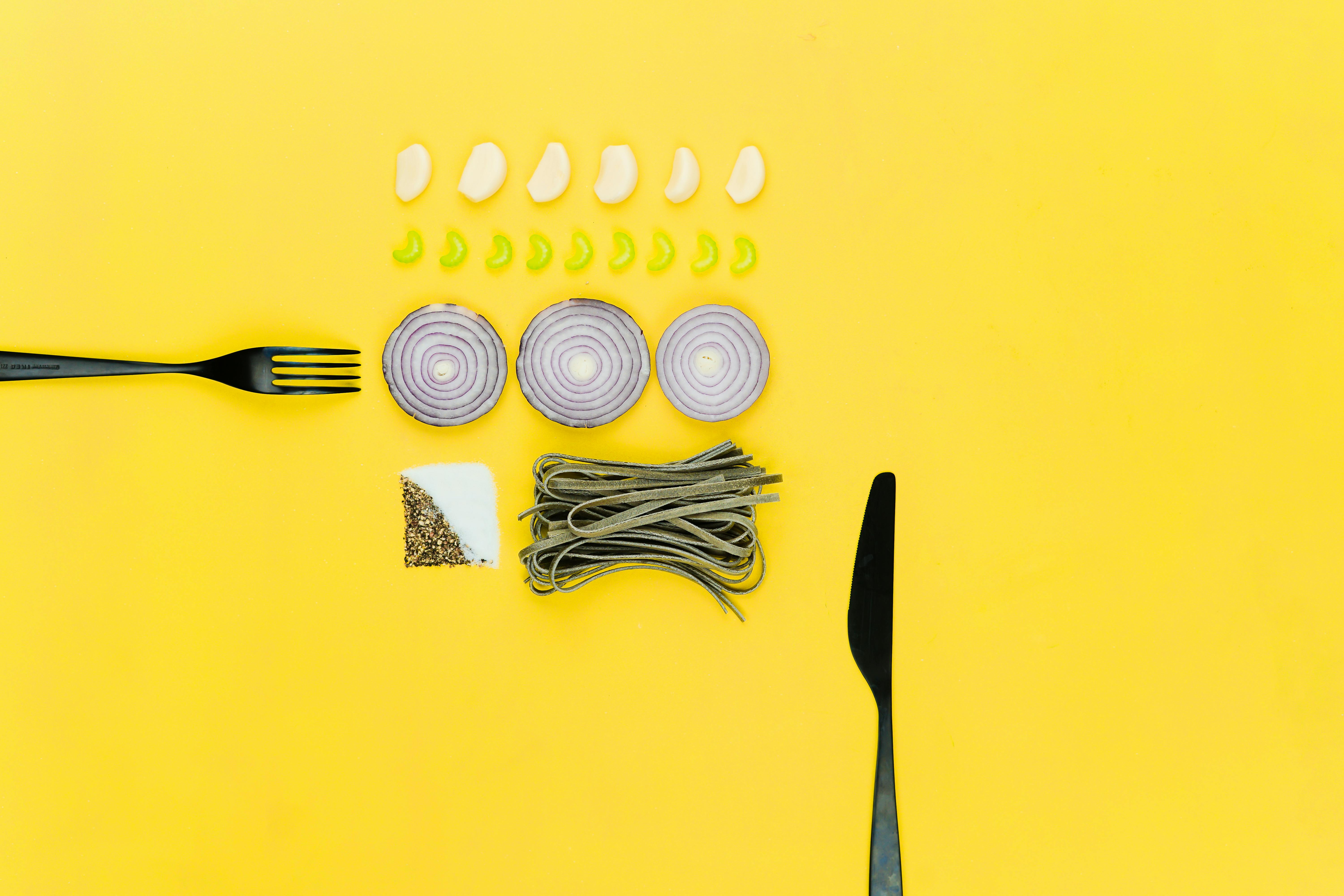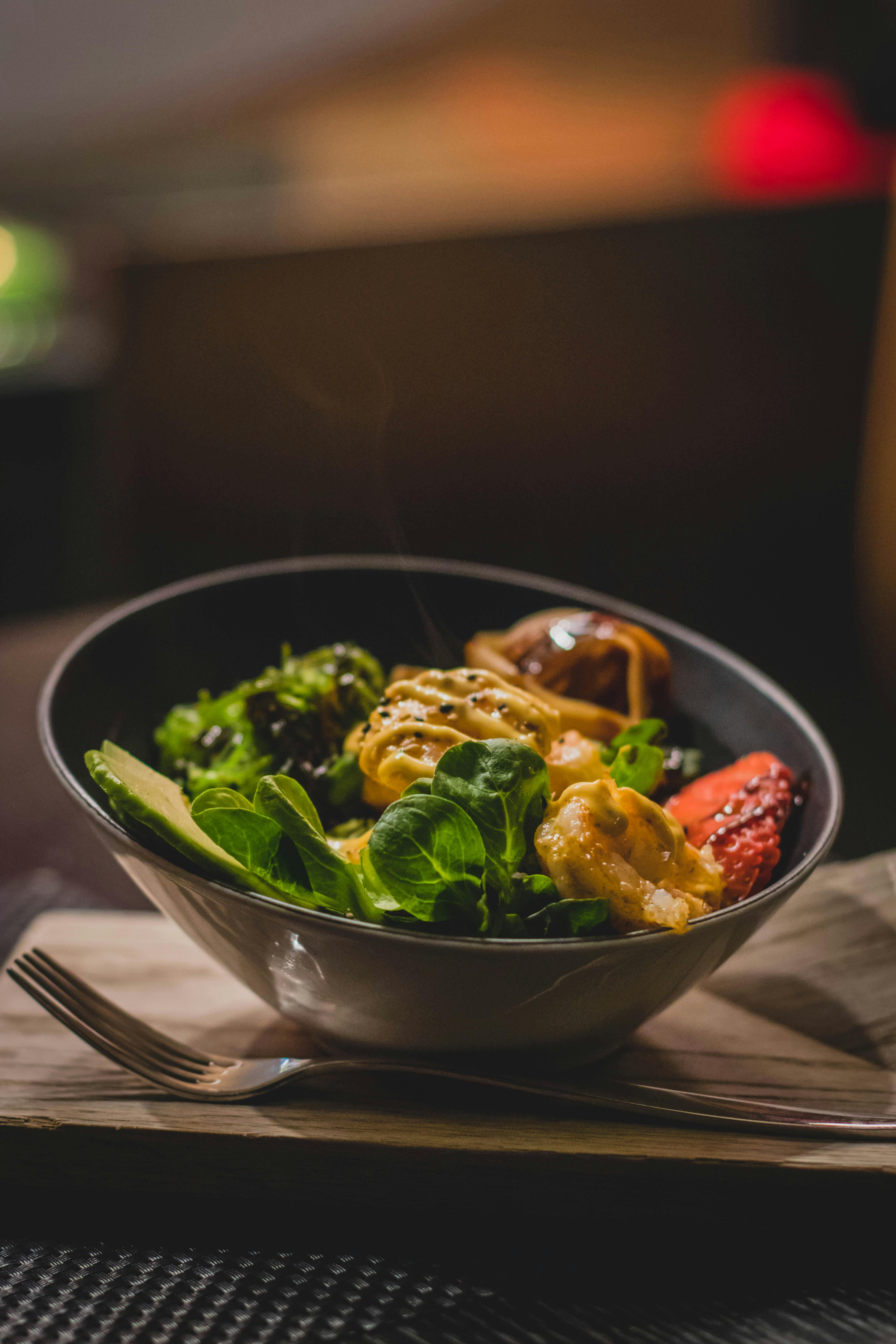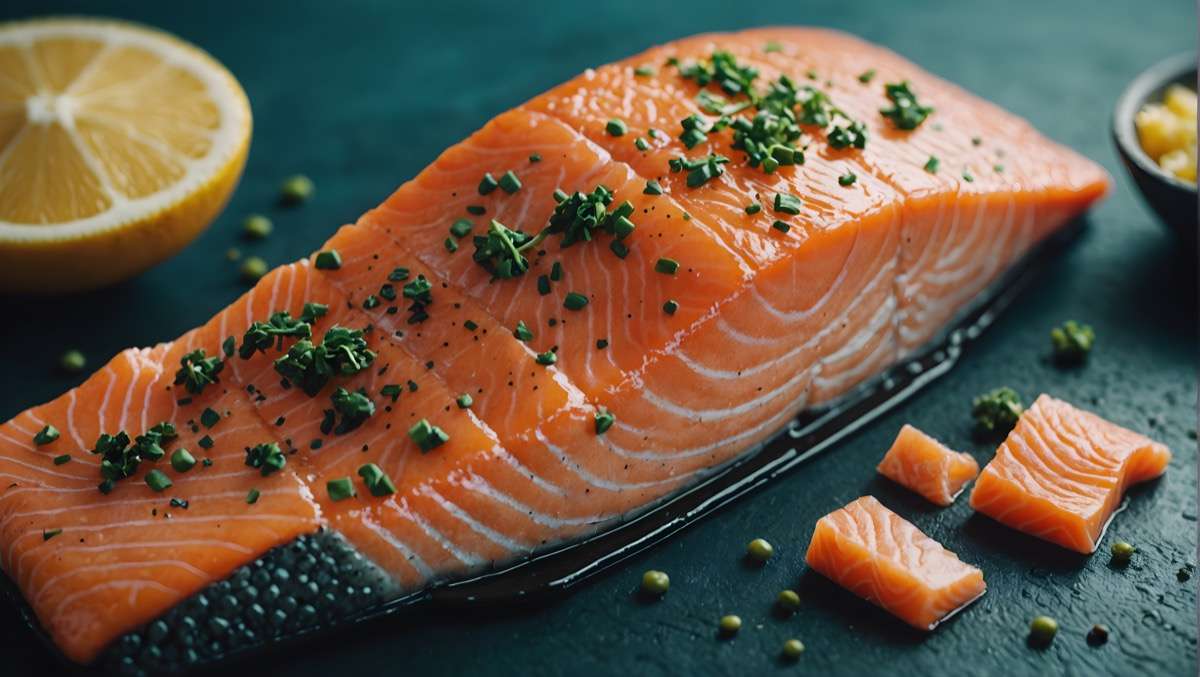The Ultimate Guide to Salmon: Explore its nutrition, health benefits, and more. Discover the different types of salmon and cooking techniques. Your comprehensive resource.
Salmon, the prized fish of many culinary enthusiasts, is often revered for its rich flavor and tender texture. But beyond its gastronomic appeal, salmon also offers a wealth of nutritional benefits that make it a standout among seafood options. Packed with heart-healthy omega-3 fatty acids, protein, and a variety of essential vitamins and minerals, salmon ranks high on the list of superfoods. This ultimate guide to salmon aims to explore its nutritional composition, delve into its potential health benefits, and shed light on its growing popularity in the culinary world. Whether you’re a seafood lover or just curious about the nutritional wonders of this fish, this guide will serve as your comprehensive resource.

Nutritional Facts
Salmon is not only delicious but also highly nutritious. It is packed with essential macronutrients, vitamins, minerals, and omega-3 fatty acids. Let’s dive into the nutritional facts of this amazing fish.
Calories and Macronutrients
When it comes to calories and macronutrients, salmon is a great choice. A 3.5-ounce (100-gram) serving of cooked salmon provides around 206 calories. It contains approximately 22 grams of protein, making it an excellent source of this essential nutrient.
Salmon is also rich in healthy fats. It contains about 13 grams of fat per 3.5-ounce serving, with a significant portion being heart-healthy omega-3 fatty acids. These fats contribute to various health benefits, which we will discuss later on.
In terms of carbohydrates, salmon has only trace amounts. This makes it a suitable option for those following low-carb or ketogenic diets.
Vitamins and Minerals
Salmon is a fantastic source of vitamins and minerals that are vital for your overall health. It is particularly high in B vitamins, including vitamin B12, niacin, and vitamin B6. These vitamins play crucial roles in energy production, brain function, and the formation of red blood cells.
Additionally, salmon contains an abundance of minerals such as selenium, potassium, and phosphorus. Selenium acts as an antioxidant and helps support a healthy immune system, while potassium and phosphorus are essential for maintaining proper muscle and nerve function.
Omega-3 Fatty Acids
One of the most significant nutritional benefits of salmon comes from its high omega-3 fatty acid content. Omega-3s are a type of polyunsaturated fat that has been extensively studied for its positive effects on health.
Salmon is particularly rich in two types of omega-3 fatty acids: eicosapentaenoic acid (EPA) and docosahexaenoic acid (DHA). These fatty acids have been linked to a range of health benefits, including reduced inflammation, improved heart health, and enhanced brain function.
Consuming salmon regularly can help increase your intake of these essential fatty acids and contribute to better overall health.
Health Benefits
The nutritional profile of salmon translates into numerous health benefits. Here are some ways that incorporating salmon into your diet can support your well-being.
Heart Health
The omega-3 fatty acids found abundantly in salmon have been shown to have significant benefits for heart health. Studies have demonstrated that consuming omega-3s can help reduce the risk of heart disease by lowering blood pressure, decreasing triglyceride levels, and reducing the risk of abnormal heart rhythms.
In addition to omega-3s, salmon also contains another heart-healthy nutrient: potassium. Adequate potassium intake has been linked to a lower risk of developing cardiovascular disease.
Brain Function
Omega-3 fatty acids play a crucial role in brain health and development. They are a major component of the brain and support optimal cognitive function throughout all stages of life.
Research suggests that a diet rich in omega-3s, such as that including regular salmon consumption, may help improve memory, mood, and overall brain performance. These fatty acids have also been linked to a reduced risk of cognitive decline and Alzheimer’s disease.
Eye Health
Salmon is also beneficial for your eyes. The omega-3 fatty acids DHA and EPA are vital for the health of your eyes’ retina. These fatty acids help maintain good vision and protect against age-related macular degeneration, a leading cause of vision loss in older adults.
Inflammation and Joint Health
Chronic inflammation is a common underlying factor in many chronic diseases, including heart disease, diabetes, and certain types of cancer. The omega-3 fatty acids in salmon have powerful anti-inflammatory properties, which can help reduce inflammation throughout the body and support overall health.
These anti-inflammatory effects can also be beneficial for joint health. Studies have shown that omega-3 supplementation can help reduce joint pain, stiffness, and inflammation in individuals with rheumatoid arthritis and other inflammatory joint conditions.
Weight Management
If you’re looking to manage or lose weight, salmon can be a valuable addition to your diet. The combination of its high protein content, healthy fats, and low carbohydrate content makes it a highly satiating food.
Protein is known to promote feelings of fullness and increase your metabolic rate, which can aid in weight management. Additionally, the healthy fats in salmon help regulate appetite hormones and provide energy for extended periods, reducing the likelihood of overeating.
Skin and Hair Health
The nutrients found in salmon, such as omega-3 fatty acids, vitamins, and minerals, are not only beneficial internally but also externally. These nutrients contribute to healthy skin and hair.
Omega-3 fatty acids help keep the skin hydrated, reduce inflammation, and promote elasticity, leading to a more youthful complexion. They can also alleviate symptoms of skin conditions like eczema and psoriasis.
Furthermore, the protein content in salmon supports the growth and maintenance of hair strands, making your locks shiny and strong.
Now that we understand the nutritional benefits and health advantages of salmon, let’s explore the different types of salmon available.
Types of Salmon
Salmon comes in various types, each with its unique flavor and characteristics. Here are some of the most common types you may come across:
Atlantic Salmon
Atlantic salmon, also known as Salmo salar, is one of the most popular types of salmon. It is native to the Atlantic Ocean and is known for its tender, mild flavor. Atlantic salmon has a higher fat content compared to other types, making it exceptionally moist and rich in omega-3 fatty acids.
Chinook or King Salmon
Chinook salmon, also referred to as Oncorhynchus tshawytscha or king salmon, is the largest species of Pacific salmon. It has a high fat content and is known for its rich, buttery flavor. King salmon is often prized for its tender flesh and is considered a delicacy by many seafood enthusiasts.
Sockeye or Red Salmon
Sockeye salmon, scientifically known as Oncorhynchus nerka, is renowned for its deep orange-red flesh. It has a firm texture and a distinct, robust flavor. Sockeye salmon is highly valued for its vibrant color and its ability to retain its appearance even after cooking.
Coho or Silver Salmon
Coho salmon, also called Oncorhynchus kisutch or silver salmon, is another popular type of salmon. It has a milder flavor compared to other species and a tender texture. Coho salmon is often used for grilling, baking, or smoking due to its excellent flavor.
Pink Salmon
Pink salmon, scientifically known as Oncorhynchus gorbuscha, is one of the smallest and most abundant salmon species. It has a milder taste and is often regarded as the most delicate salmon variety. Pink salmon is commonly used in canned or frozen forms, making it an affordable option.
Chum or Keta Salmon
Chum salmon, also referred to as Oncorhynchus keta, is another widely available type of salmon. It has a low fat content and a milder flavor compared to other species. Chum salmon is often used for smoking or curing due to its firm texture.
Knowing the different types of salmon can help you decide which one suits your taste preferences and cooking methods. But before we delve into various cooking techniques, let’s explore the differences between fresh and frozen salmon.
Fresh vs. Frozen Salmon
When it comes to choosing between fresh and frozen salmon, there are multiple factors to consider, including quality, taste, convenience, availability, and nutritional value. Understanding the pros and cons of each option can help you make an informed decision.
Quality and Taste
Fresh salmon is often considered superior in terms of taste and texture. It has a delicate flavor, firm flesh, and vibrant color, making it a coveted choice for many seafood lovers. However, the quality of fresh salmon depends on various factors, including the handling, storage, and transportation methods.
On the other hand, frozen salmon can offer comparable taste and texture to fresh salmon if properly handled and frozen at its peak freshness. Quick freezing techniques, such as flash freezing, help preserve the quality of the fish by locking in its natural flavors and nutrients. This makes frozen salmon a convenient and reliable option, especially when fresh salmon may not be readily available.
Convenience and Availability
Fresh salmon is typically available at local fish markets, grocery stores, or seafood counters. The availability of fresh salmon may vary depending on your location and the seasonality of the fish. It is important to be aware of the source and freshness of fresh salmon to ensure its quality.
Frozen salmon, on the other hand, offers greater convenience and availability. It can be purchased in bulk and stored in your freezer for an extended period. This allows you to enjoy salmon without worrying about its availability or making frequent trips to the grocery store.
Nutritional Value
In terms of nutritional value, fresh and frozen salmon are generally comparable. Both options provide essential nutrients, omega-3 fatty acids, and vitamins. However, the nutrient content may degrade slightly during the freezing process, with the extent depending on the freezing method and duration.
To ensure maximum nutritional value, it is advisable to choose frozen salmon that has been properly processed and frozen at its peak freshness. Additionally, consuming frozen salmon within the recommended storage duration helps maintain its flavor and nutritional integrity.

Sourcing and Sustainability
Sourcing salmon responsibly is essential to preserve the health of our oceans and ensure long-term availability. There are two main sources of salmon: wild-caught and farm-raised. Let’s explore each source and their implications for sustainability.
Wild-Caught Salmon
Wild-caught salmon refers to fish that are caught in their natural habitat, typically the ocean or rivers. These salmon have a more diverse diet and generally exhibit more dynamic behavior compared to their farm-raised counterparts.
Wild-caught salmon is usually considered more sustainable due to its lower impact on the environment. It is often harvested using sustainable fishing practices, such as selective fishing gear and strict catch limits, to maintain healthy fish populations and minimize bycatch.
However, it is crucial to be aware of sustainable fishing certifications, such as the Marine Stewardship Council (MSC) label, when purchasing wild-caught salmon. These certifications indicate that the fishery meets criteria for environmental sustainability and responsible fishing practices.
Farm-Raised Salmon
Farm-raised salmon, also known as aquaculture salmon, is produced in regulated aquatic environments. These salmon are raised in pens or cages and are provided with a controlled feed to promote optimal growth.
The sustainability of farm-raised salmon depends on the farming practices employed. Some fish farms prioritize sustainability by using responsible feed sourcing, minimizing waste and pollution, and avoiding the use of harmful chemicals.
Look for certifications such as the Aquaculture Stewardship Council (ASC) label when purchasing farm-raised salmon. These certifications ensure that the farm operates according to specific sustainability standards.
It is important to note that not all farm-raised salmon is sustainable. Some fish farms have been associated with environmental concerns, such as water pollution and the spread of diseases to wild fish populations. Therefore, choosing farm-raised salmon from reputable sources is crucial to support sustainable aquaculture practices.
Cooking Techniques
Salmon’s versatility makes it suitable for various cooking techniques. Each method imparts unique flavors and textures to the fish. Here are some popular cooking techniques to try:
Baking
Baking salmon is a simple and healthy way to enjoy its natural flavors. Preheat your oven to around 425°F (218°C) and place the salmon fillets or steaks on a baking sheet lined with parchment paper. Season the salmon with your choice of herbs, spices, or a marinade. Bake for approximately 12-15 minutes until the salmon is cooked through and flakes easily with a fork.
Grilling
Grilling salmon adds a smoky flavor and crispy texture to the fish. Preheat your grill to medium heat and lightly oil the grates to prevent sticking. Place the salmon fillets or steaks on the grill, skin-side down, and close the lid. Grill for about 4-6 minutes per side, depending on the thickness of the salmon. Flip once halfway through cooking, being careful not to overcook the fish.
Pan-Frying
Pan-frying salmon creates a flavorful crust while keeping the inside moist and tender. Heat a skillet over medium-high heat and add a small amount of oil or butter. Place the salmon fillets, skin-side down, and cook for about 4-5 minutes. Flip the salmon and cook for an additional 3-4 minutes until it reaches the desired level of doneness.
Poaching
Poaching salmon produces a delicate and moist result. In a saucepan, combine water or broth with aromatic ingredients such as herbs, lemon slices, and spices. Bring the liquid to a gentle simmer and add the salmon fillets. Cook for approximately 10-12 minutes, or until the salmon is cooked through and opaque.
Steaming
Steaming salmon helps retain its natural flavors and nutrients. Fill a pot or a steamer basket with a small amount of water and bring it to a simmer. Place the salmon fillets on the steamer basket, cover, and steam for about 6-8 minutes. The cooking time may vary depending on the thickness of the fillets, so check for doneness with a fork.
Experimenting with these cooking techniques will allow you to discover your preferred method and cater to your taste preferences.

Popular Salmon Dish Recipes
Salmon can be enjoyed in various delicious dishes. Here are some popular recipes to try:
Grilled Teriyaki Salmon
For a flavorful and tangy dish, marinate salmon fillets in a homemade teriyaki sauce. Grill the salmon until cooked through and serve with steamed vegetables or rice for a complete meal.
Baked Lemon Herb Salmon
Herb-crusted salmon baked with fresh lemon slices is a classic and refreshing choice. Season the salmon with herbs like dill, thyme, or parsley, and bake until cooked to perfection.
Pan-Seared Citrus Salmon
Pan-seared salmon with a citrus glaze offers a burst of vibrant flavors. Sear the salmon in a hot skillet, then finish it off with a glaze made from fresh orange juice, honey, and a hint of soy sauce.
Teriyaki Glazed Salmon Bowls
Create a wholesome and satisfying meal by serving teriyaki-glazed salmon on a bed of cooked quinoa or brown rice. Top it with steamed vegetables, avocado slices, and a drizzle of teriyaki sauce.
Smoked Salmon and Cream Cheese Bagels
Indulge in a classic brunch favorite by layering thinly sliced smoked salmon on a toasted bagel spread with cream cheese. Top with capers, red onion slices, and fresh dill for an added touch of flavor.
These recipes are just a starting point, and you can get creative by adding your favorite ingredients and flavors to customize your salmon dishes.
Tips for Buying and Storing Salmon
To ensure the freshness and quality of your salmon, consider the following tips when making your purchase and storing it:
Fresh Salmon
- Look for salmon with vibrant and firm flesh. The color should range from pink to red, depending on the species.
- Choose salmon that has a mild, almost sweet aroma. Avoid fish with a strong or fishy odor, as it may indicate poor freshness.
- If purchasing whole salmon, check for clear and bright eyes. Dull or cloudy eyes can be a sign of deteriorating quality.
- Ask the fishmonger about the origin and handling of the salmon to ensure its freshness and sustainability.
Frozen Salmon
- Opt for individually wrapped fillets or steaks to facilitate portioning and minimize waste.
- Check the packaging for any signs of freezer burn, such as ice crystals or discoloration.
- Follow the recommended storage duration and method indicated on the packaging.
Proper Storage Tips
- Store fresh salmon in the refrigerator immediately after purchasing. Place it in a sealed container or wrap it tightly in plastic wrap to prevent odor transfer and maintain freshness.
- Fresh salmon can generally be stored in the refrigerator for up to two days. Plan your meals accordingly to avoid wastage.
- If you cannot consume the salmon within a few days, consider freezing it to retain its quality. Wrap the salmon tightly in plastic wrap and seal it in a freezer bag or airtight container. Frozen salmon can be stored for up to three months.
- Thaw frozen salmon in the refrigerator overnight or use the defrost function on your microwave. Avoid thawing salmon at room temperature to minimize the risk of bacterial growth.
By following these guidelines, you can enjoy fresh, flavorful salmon while minimizing waste and ensuring food safety.
Precautions and Potential Risks
While salmon is generally a safe and healthy food choice, there are a few precautions to be aware of:
Mercury and Contaminant Levels
All fish, including salmon, can contain trace amounts of environmental contaminants, such as mercury and polychlorinated biphenyls (PCBs). These substances accumulate in fish through the marine food chain.
The levels of mercury and contaminants in salmon are generally low and considered safe for consumption. However, certain populations, such as pregnant women, nursing mothers, and young children, are advised to limit their consumption of high-mercury fish, including some types of salmon.
It is recommended to choose wild-caught salmon, as it typically contains lower levels of contaminants compared to some farm-raised varieties.
Raw and Undercooked Salmon
Consuming raw or undercooked salmon poses potential health risks, including the risk of foodborne illnesses. Raw salmon may harbor parasites, bacteria, or viruses that can cause stomach upset, diarrhea, or more severe complications.
Ensure that salmon is properly cooked to an internal temperature of 145°F (63°C) to eliminate any harmful microorganisms.
Allergies and Sensitivities
Salmon is a common allergen for some individuals. Allergic reactions to salmon can vary in severity and may include symptoms such as hives, swelling, nausea, or difficulty breathing.
If you have a known allergy to fish or are unsure about your tolerance to salmon, consult with a healthcare professional before incorporating it into your diet.
Incorporating Salmon into Your Diet
Now that you are familiar with the nutritional benefits, cooking techniques, and precautions of salmon, let’s explore some tips for incorporating this nutritious fish into your diet:
Meal Planning
Plan your meals in advance to include salmon regularly in your diet. Aim to have a couple of salmon-based meals each week to reap its many health benefits. Experiment with different recipes and cooking methods to keep your meals interesting.
Snack Ideas
Create delicious and healthy snacks using salmon. Smoked salmon can be rolled up with cream cheese and fresh vegetables for a nutritious and satisfying snack. You can also incorporate flaked or canned salmon into homemade dips or spreads.
Salmon Salad Options
Salmon makes a wonderful addition to salads. Top your favorite salad greens with grilled or baked salmon and a variety of colorful vegetables. Enhance the flavor by adding some nuts, seeds, or a light vinaigrette dressing.
Salmon in Pasta and Rice Dishes
Boost the protein and nutrient content of pasta or rice dishes by adding flaked or grilled salmon. Combine cooked salmon with your preferred pasta, rice, or grains, along with fresh herbs, vegetables, and a light sauce or dressing.
Salmon in Soups and Chowders
Add cooked salmon to a homemade soup or chowder for a hearty and nutritious meal. The flavors of salmon can complement various soup bases, such as tomato, vegetable, or creamy bisque. Enhance the texture and taste by adding vegetables, herbs, or spices.
Incorporating salmon into your diet can be an enjoyable and healthy experience. With its exceptional nutritional profile and versatility in cooking, salmon is a great addition to any meal plan.
As you explore different recipes and cooking techniques, remember to source your salmon responsibly and follow proper storage guidelines to maintain its quality. Whether you prefer fresh or frozen, wild-caught or farm-raised, salmon can be a delicious and nutritious choice for your meals.
Disclaimer: The information provided in this article is for general informational purposes only and does not constitute professional medical advice. Always consult with a healthcare professional before making any dietary changes or if you have specific concerns or questions about your health.


